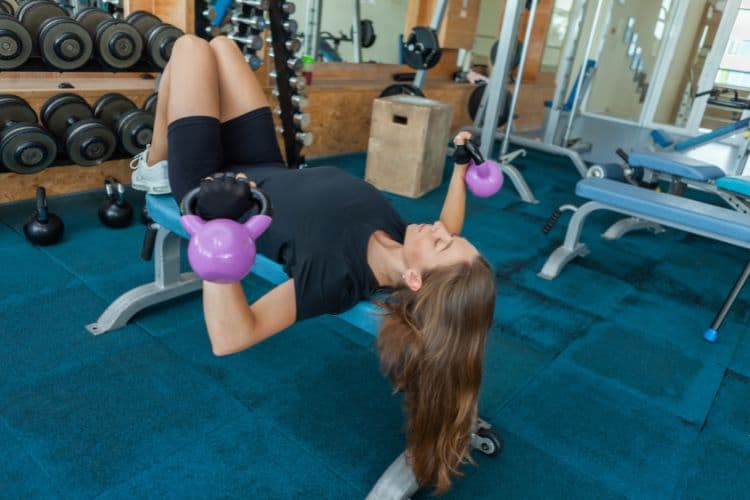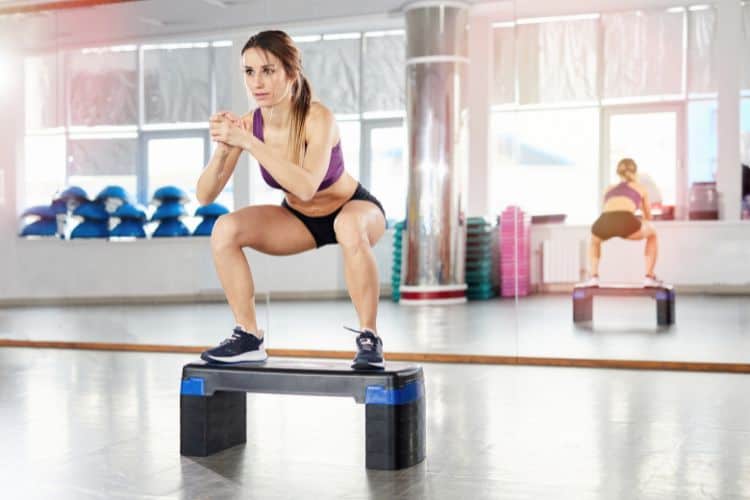Sign up for workout ideas, training advice, reviews of the latest gear and more.





Building upper-body strength doesn’t require years of fitness experience or advanced lifting skills. If you’re a beginner ready to feel stronger, more toned, and more confident in your upper body, the best place to start is with a well-structured 45-minute workout routine. This type of session is long enough to target all the major muscle groups—chest, shoulders, back, biceps, and triceps—while still being manageable for someone new to strength training.
The best 45-minute beginner upper body workout combines foundational movement patterns, slow and controlled reps, proper rest intervals, and beginner-friendly modifications. Whether you’re working out at home with dumbbells or in the gym with basic equipment, this routine helps you build strength safely while preventing injury. Even better, this type of upper-body training improves posture, increases joint stability, and supports better performance in everyday tasks like carrying groceries, lifting objects, or maintaining good posture at a desk.
Below, you’ll find the complete 45-minute workout, science-backed benefits, warm-up, cooldown, technique tips, and ways to progress as you get stronger.
If you’re new to exercise, upper-body strength is one of the most important areas to build early. That’s because nearly every movement you perform throughout the day involves your arms, shoulders, back, or chest. Training these muscles provides benefits that extend far beyond the gym.
Many beginners struggle with poor posture due to long hours spent sitting, texting, or working at a computer. Strengthening the back, shoulders, and upper spine helps naturally pull the body into a healthier alignment. This reduces upper-back pain, tech-neck discomfort, and shoulder stiffness.
Functional strength training makes your daily life easier—lifting bags, pushing carts, carrying kids, reaching overhead. Strong upper-body muscles improve mobility and physical power, giving you a more capable and confident body.
Muscle tissue burns more calories than fat, even at rest. When you train your upper body, you increase lean muscle mass, which helps support fat loss and gives your arms and shoulders a toned, defined look.
Once your upper body is strong, exercises like push-ups, deadlifts, burpees, and kettlebell swings become more accessible. A strong upper body also improves core engagement and reduces the risk of compensations that lead to injury.
A well-designed beginner routine should feel challenging but never intimidating. To help you build strength safely and effectively, this 45-minute workout includes:
Compound movements to train multiple muscle groups at once
Beginner-friendly isolation exercises to strengthen individual muscles
Simple equipment (dumbbells, bands, or bodyweight)
Controlled time under tension for better muscle activation
Enough rest time to maintain proper form
Progressive overload options for continued results
Each circuit gradually increases in intensity without overwhelming your joints or muscles.
Below is your complete training structure, including warm-up, three main circuits, and a cooldown. This routine is designed to be performed 2–3 days per week with at least one rest day in between sessions.
A proper warm-up prepares your joints, activates your muscles, and helps reduce injury risk.
Perform 3 rounds. Rest 60 seconds between rounds.
Focus: Chest, shoulders, triceps
Beginners benefit from floor pressing because it protects the shoulders and encourages proper form.
Focus: Back, lats, rear delts
Keep your spine neutral and pull your elbow toward your hip.
Focus: Shoulders & triceps
Start with light weight and avoid arching your lower back.
Focus: Biceps
Hammer grip protects wrists and elbows.
Rest 60 seconds, then repeat.
Target muscles: Chest, shoulders, triceps
Perform 2 rounds. Rest 60 seconds between rounds.
Perfect for beginners working up to full push-ups.
Focus: Shoulders
Slow tempo helps develop control and stability.
Focus: Triceps
Keep your elbow lifted and stationary.
Focus: Chest
Low weights recommended—this is an isolation movement.
Rest 60 seconds, then repeat.
Perform 3 rounds with 45 seconds rest between rounds.
Focus: Lats & upper back
Great beginner alternative to the cable machine.
Focus: Lats, upper back
Control the lowering phase for best results.
Focus: Biceps
Keep elbows tight for better isolation.
Focus: Back of shoulders
Helps correct posture and roundness in the shoulders.
Finish strong by lengthening your muscles and slowing your breathing.
If you’re new to upper-body strength training, using proper form is more important than lifting heavy.
A beginner should choose weights that feel comfortable yet challenging on the last 2–3 reps of each set. Form always comes first.
Rushing leads to poor technique. Move slow, maintain muscle tension, and avoid swinging.
Work on full, controlled movements to build mobility and strength simultaneously.
Beginners may need more rest than advanced lifters. Listen to your body.
Avoiding these common issues will help your progress skyrocket.
Heavy lifting without proper technique can lead to injury and poor muscle activation.
Beginners often round their shoulders or fail to activate their lats. Keep shoulder blades down and back.
Mobility and flexibility matter—these steps prevent tightness and support long-term results.
Aim to train upper body 2–3x weekly for best results.
As your strength improves, gradually increase intensity with:
Heavier dumbbells
More reps (12 → 15)
Slower tempo (3-second lowering phase)
Added circuits or new exercises
Reduced rest time
You’ll never plateau if you continue challenging your muscles with controlled, progressive overload.
Consistent training leads to visible and physical improvements:
Even beginners can make incredible progress with the right routine.
This routine is ideal if you are:
New to strength training
Returning from a long break
Struggling with push-ups
Wanting to tone your arms & shoulders
Looking to improve posture
Working out at home with minimal equipment
It’s also great for anyone who prefers a simple, structured plan without complicated gym movements.
Here’s how beginners can structure their week:
If you want to feel stronger, reduce upper-body tightness, and build lean muscle as a beginner, this 45-minute upper-body workout is the best place to start. It strikes the perfect balance between challenge and accessibility, teaching you foundational strength movements while helping you feel confident in your routine. Stick with it consistently and you’ll notice improvements in strength, posture, muscle tone, and overall energy within just a few weeks.
After completing your 45-minute upper body session, don’t stop there—enhance your routine and keep your momentum going with these helpful resources: Check out our article on a Complete 45‑Minute Upper Body Workout Plan for Arms & Back for detailed weekly scheduling and recovery guidelines. If you’re short on time some days but still want upper-body burn, try the Quick & Powerful: 25 Minute Upper Body HIIT with Dumbbells routine. Want to also strengthen your entire body? Explore our Full Body Compound Workout Plan for Strength and Muscle Growth for multi-muscle training. Prefer no-equipment options? See the Best Body Weight Workouts for Women article to adapt upper and full-body moves using just your body. Finally, keep your fat-loss and definition goals on track by reading our Top Fat Burning Exercises to Torch Calories Fast guide.
Stay up to date on the latest women’s health, fitness and lifestyle trends and tips.